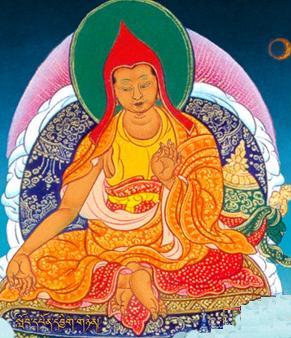Vasubandhu: Difference between revisions
Jump to navigation
Jump to search
No edit summary |
No edit summary |
||
| Line 3: | Line 3: | ||
==His Writings== | ==His Writings== | ||
*[[Abhidharmakosha]] | *[[Abhidharmakosha]] | ||
*[[Analysis of the Five Skandhas]] | |||
*[[Thirty Stanzas]] | *[[Thirty Stanzas]] | ||
*[[Treatise on Karma]] | *[[Treatise on Karma]] | ||
Revision as of 09:07, 1 November 2008

Vasubandhu (Tib. Yiknyen; Wyl. dbyig gnyen) numbers among the ‘Six Ornaments’, the greatest Buddhist authorities of Ancient India. He was the younger brother of Asanga, and composed The Treasury of Abhidharma (Skt. Abhidharmakosha), a complete and systematic account of the Abhidharma, the peak of scholarship in the Fundamental Vehicle. Later he followed the Mahayana Yogachara view, and wrote many works, such as Thirty Stanzas on the Mind (Trimsikavijñapti-karika).
His Writings
- Abhidharmakosha
- Analysis of the Five Skandhas
- Thirty Stanzas
- Treatise on Karma
- Treatise on the Three Natures
- Twenty Stanzas
His Disciples
He famously had four students who were more learned than himself: Sthiramati, who was more learned in Abhidharma; Dignāga, who was more learned in Pramāṇa; Guṇaprabha, who was more learned in the Vinaya; and Arya Vimuktasena, who was more learned in Prajñāpāramitā.
Further Reading
- Stefan Anacker, Seven Works of Vasubandhu: The Buddhist Psychological Doctor, Motilal Banarsidass, 2nd Edition, 2002